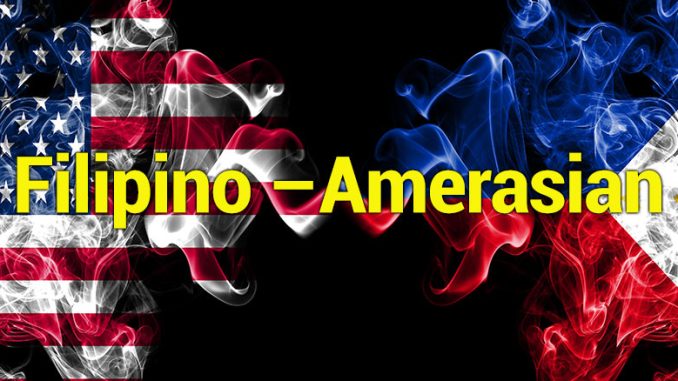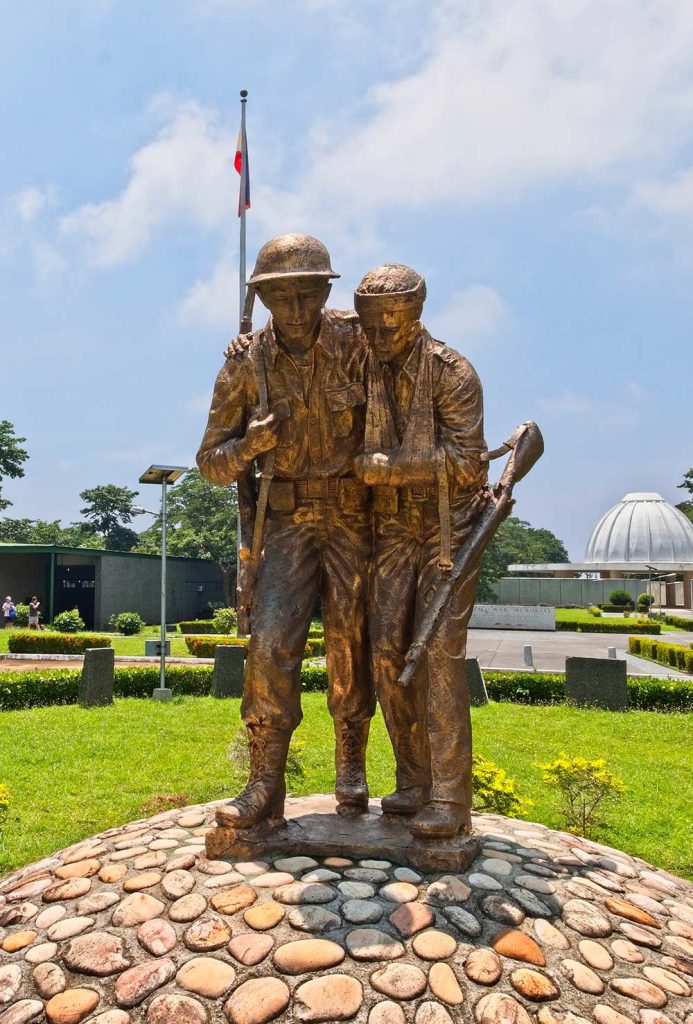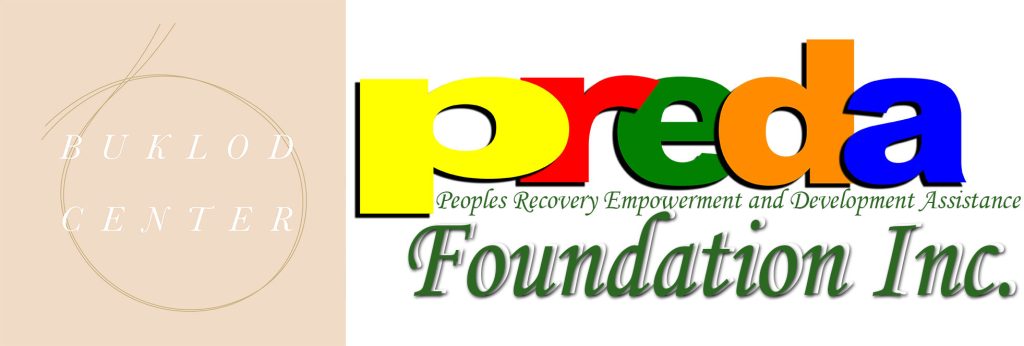
Non-government organizations (NGOs) contribute a vital role in resolving international issues as they can influence policy agendas, behavior, and the interests of the state and be a voice of the marginalized peoples (Makoba, 2002). They serve as a tool in providing the needs of the underprivileged. NGOs in the Philippines assist in various ways, including providing food, shelter, health care, and financial needs, among others. Among the marginalized groups being supported by NGOs in the Philippines are the so-called Amerasians. Amerasians pertain to the children of Asian women from American soldiers based in different United States outposts across Asia (Buck as cited by Regencia, 2014). They were often referred to as “half-breeds” because of their biracial quality. Many Amerasians were neglected because of fear of ostracizing and the economic incapability of the parents to foster them (Raphelson, 2018). When the said military bases closed, many children were left and abandoned in the Philippines, both paternally and maternally. This caused them to live under poverty and marginalization (Lapinig, 2013). Buklod Center Inc. and The People’s Recovery Empowerment and Development Assistance (PREDA) are the last two NGOs supporting the Filipino-Amerasians in Olongapo City, the Philippines.
The US Military Occupation of the Philippines
In 1902, the United States established a naval base in Subic Bay, Olongapo and started a settlement in the area. Original Filipino residents in the area saw the outpost as an opportunity to earn money by working in bars, especially those who have not attained formal education or do not qualify to apply for employment with certain requirements (Ahern, 1992). A red-light district also emerged in the area to cater to the decadent needs of the US military personnel. As a result, the population of the Filipino-Amerasians started to increase. Child Amerasians were either taken care of by their biological mothers, surrogate parents, or maternal relatives. In unfortunate cases, they were left to live on their own and were being raised by welfare institutions. Surviving was difficult for them for the reason that Amerasian children receive little or no assistance at all from the U.S and Philippine governments (Santos, 1999).

In a recent study, there is an estimate of 50,000 bi-racial Amerasians are scattered across West Luzon and parts of the Philippines (Kutschera & Caputi, 2012). The 1982 Amerasian Immigration Act (Public Law 97–359 10/22/92) provides the rights of Amerasians born in Cambodia, South Korea, Laos, Thailand and Vietnam after December 31, 1950, and before October 22, 1982, that were fathered by the US citizens. Noticeably, the Philippines was excluded from the said act. In 1993, mothers of Filipino-Amerasian children filed a lawsuit against the US federal government to ask for benefits for their children. However, the federal court decided that there is no sufficient evidence that will support their stand that Filipino- Amerasians were products of prostitution, which is an illegal activity, therefore it is an invalid basis for the legal claim (Kutschera, Caputi, & Talamera-Sandico, 2014).
The Filipino-Amerasian Problem
Filipino-Amerasians were experiencing discrimination, stigmatization, and disorganization not only within Olongapo society but also within their households, which resulted in psychological distress (Kutschera & Galang, 2014). Moreover, their low economic situation added to the existential struggle. NGOs do not necessarily guarantee change or full assistance to every family they help. However, transnational advocacy networks, an umbrella organization of NGOs, national and local government agencies, and social movements, provided concrete actions that improved state behavior and policy towards the said disadvantaged biracial children. The case of the Amerasians was raised through the four tactics of persuasion noted by Keck and Sikkink (1998). They first utilized the emerging concept of information politics. The actors presented testimonials and statistical information to make a strong argument for Amerasians. Second, these actors utilized symbolic politics by framing the issue as an American and humanitarian one to connect Amerasians to the American public. Third, the actors used moral leverage by comparing the lack of US policies concerning Amerasians to the French example of open citizenship to French Eurasians. And lastly, accountability politics which is a method used to expose the inefficiency of previously existing policies concerning illegitimate children born overseas to US citizens.
Unfortunately, in a United States legislative decision by the Subcommittee on Immigration and Refugee Policy and by the Committee on Judiciary excluded Japan, Taiwan, and the Philippines continued to deny all Amerasians equal rights. No explanations were provided as to why the amendments were made. PREDA filed a complaint in 1993 regarding the rights of Filipino-Amerasians to immigrate under the Amerasian Act. It was, however, rejected by the United States Congress, stating that the mothers of the Amerasians in the Philippines were prostitutes and the illegality of prostitution prohibited the court from trying the case. Attempts to amend the bill were unsuccessful. An example was by Senator Daniel Inouye of Hawaii, who reintroduced P.L.97-359 from 1997 to 2001 and hoped for an amendment to include Japan and the Philippines. But the Judiciary Committee responded that “Amerasians in the Philippines and Japan are not subject to discrimination, prejudice or hatred, the mothers were prostitutes, and these countries were not war zones.” This commentary by the Judiciary Committee conflicted with the statements created and represented by media and NGOs covering Amerasian issues in Japan and the Philippines. The Judiciary Committee knew nothing about the situation Amerasians in these countries do experience discrimination, prejudice, and hatred. Moreover, the ‘war-zoning’ of Japan and the Philippines can be contested because these countries were used to build bases for the Korean, Vietnam, and Gulf wars, as well as the continued strategic efforts of ‘stabilization’ in Asia and the Middle East.
With the support of other American legislators, hope continues to be present and future efforts exerted by many advocates to amend the law. News media also became a major factor in strengthening the presence and actions of international actors the Philippines, Japan, and the US (Gage, 2007).

NGOs’ Continued Assistance
Buklod Center Inc. and PREDA Foundation continue to provide livelihood opportunities, education, and rehabilitation programs to Filipino-Amerasians to relieve them from their economic and societal struggles. They also provide awareness programs on the situation of the marginalized so that both societal groups will be able to form a bond and acceptance.
These livelihood programs became a way for the Filipino-Amerasians to gain a different mindset and widened knowledge about different ways to make money. This included, but not limited to, preparing and serving food in canteens, selling various kinds of goods in sari-sari (Filipino convenience) stores, and creating handicrafts such as bags, purses, and small wallets. The income that they obtain is then utilized to balance the financial needs of the community to sustain financial stability. On the other hand, educational programs were the course of action made by the NGOs to help the Filipino-Amerasians become competitive academically and gain intellectual skills. However, some circumstances limited the action to be done such as personal choice of not pursuing education to work early, the shift of focus of the NGOs, and the lack of funds. Lastly, rehabilitation programs were the efforts of the NGOs to assist in the social and personal upbringing of the Filipino-Amerasian community. The objective was to mold their character and self-esteem to nourish good emotional and social qualities. All of which successfully improved the welfare of the Filipino-Amerasian community.
The various programs of Buklod Center and PREDA were able to give the Filipino-Amerasians a significant improvement in their lives. These programs included livelihood, education, and rehabilitation. The livelihood programs for the Filipino-Amerasians were a way for them to have daily income and funds for the organization, as well as the alternative learning training system. The educational programs of Buklod and PREDA allowed the Filipino-Amerasians to have a proper education and gain intellectual skills. Several Filipino-Amerasians were able to finish their studies until college and become successful in their fields. The educational programs also gave the Amerasians proper knowledge about their rights and can fight for it. The Filipino-Amerasians were not only given away to gain income and educational support, Buklod, and PREDA also gave programs for their well-being. For their rehabilitation programs, they provided programs that would normalize the lives of the Filipino-Amerasians as some were abandoned, some used drugs, health concerns and those who were sexually abused by focusing on emotionally supporting and encouraging them. Buklod and PREDA gave the Amerasians social development by giving them a proper knowledge of their rights and providing counsel since they are susceptible to discrimination.
The two organizations went as far as raising the quality of life of the Filipino-Amerasians internationally, hoping to receive support and to collaborate with different organizations driven with the same goal and similar focus. They had connections with anti-militarism, prostitution, and child support organizations. Conferences became their avenue of sharing the experiences and situation of the Filipino-Amerasians. These actions were made as an attempt to influence US policies regarding Amerasians. However, it has been quite a challenge for both organizations to continue with the process because of track one diplomacy, a government to government exposition, which posed denial and neglect to the efforts both organizations made for the case of the Filipino-Amerasians. The media also played a role in helping the organizations give the community cognizance. This became an opportunity to try and include the Filipino-Amerasians in the bigger picture. At this point, the media became a ground to expose the history of the community. This sought the recognition of the community but was then again hidden to cover the concern that may affect the tourism of Olongapo City.
The case of the Filipino-Amerasians remained at low despite efforts for being recognized. But, NGOs like Buklod Inc. and PREDA Foundation continue to provide the needs of the community despite being denied, ignored, and unconsidered. NGOs lay down a variety of ways to address areas of development and also raise awareness for public action (Lewis, 2010). NGOs pursue a kind of work without seeking direct help from the government. These organizations function by the voluntary will of people and their desire to help (Potapkina, 2009). Also, non-government organizations ventures on influencing soft laws which may eventually be a binding law supposing that if it gets declared. They play a significant role in policy making because they are responsive to the needs of the communities in need and bringing it in the international arena (Alihusain, 2010). They should also possess the eyes to look beyond and the will to do something that governments fail to do so. An in-depth understanding of situations shall be present to influence and develop communities. Additionally, non-government organizations make every effort towards progress and influence in the international community.
Roche Christine C. Angeles
Roche Christine C. Angeles is an MA student at the Helena Z. Benitez School of International Relations and Diplomacy, Philippine Women’s University. She does research on marginalized and displaced peoples. She may be reached at 2018t1400@pwu.edu.ph.
Reference:
Ahern, J. M. (1992). Out of sight, out of mind: United States immigration law and policy as applied to Filipino-Ameraians. Pacific Rim Law & Policy Journal, 1(1), 105-126.
Alihusain, C. (2010). NGO’s in International Law. Peace Palace Library. Retrieved from http://www.peacepalacelibrary.nl/2010/11/the-influence-of-ngos-on-international-law/.
Gage, S. (2007). The Amerasian Problem: Blood, Duty, and Race. International Relations, 21(1), 86-102.
Keck, M., & Sikkink, K. (1998). Trasnational Advocacy Networks in International and Regional Politics. International Social Science Journal, 51(159), 89-101.
Kutschera, P. Caputi, M.A., & Talamera-Sandico, M.G. (2014). Filipina Military Amerasian Motherhood: Stigma, Stereotypes, Truths and Realities. Paper presented at the Asia Pacific Social Sciences Conference (APSSC-2014), Seoul, South Korea, pp. 1-14.
Kutschera, P.C. & Caputi, M.A. (2012). The Case for Categorization of Military Filipino Amerasians as Diaspora. Paper presented Ninth International Conference on the Philippines (ICOPHIl-2012), Asian Studies Center, Michigan State University.
Kutschera, P.C. and Galang, E.G. (2014) No Way Out: The Tragic Transnational Sexual Exploitation of the Philippines. Amerasian Research Network, Ltd. Retrieved from http://amerasianresearch.org/APCBSS-2014_Taiwan_Paper.pdf.
Lapinig, C. (2013). The Forgotten Amerasians. The New York Times. Retrieved from https://www.nytimes.com/2013/05/28/opinion/the-forgotten-amerasians.html?_r=0.
Lewis D. (2010). Nongovernmental Organizations, Definition and History. In H.K. Anheier & S. Toepler (eds). International Encyclopedia of Civil Society. Springer, New York, NY. doi: 10.1007/978-0-387-93996-4.
Makoba, J.W. (2002) Nongovernmental Organizations (NGOS) and Third World Development: An Alternative Approach to Development. Journal of Third World Studies, 19(1), 53–63.
Potapkina, V. (2009). The Role of International Humanitarian Ngos in African Conflicts in The Post-Cold War Period. (Unpublished bachelor’s thesis.) Masaryk University: Czechia. Retrieved from https://is.muni.cz/th/220306/fss_b/BA_thesis.pdf.
Raphelson, S. (2018). One Man’s Mission To Bring Home ‘Amerasians’ Born During Vietnam War. NPR. Retrieved from https://www.npr.org/2018/07/12/628398153/one-mans-mission-to-bring-home-amerasians-born-during-vietnam-war.
Regencia, T. (2014). No way home for Filipino ‘Amerasians’. Al-Jazeera English. Retrieved from https://www.aljazeera.com/indepth/features/2014/04/no-way-home-filipino-amerasians-philippines-military-base-20144257129226765.html
Santos, A.F. (1999). Blazing Trails, Confronting Challenges: The Sexual Exploitation of Women and Girls in the Philippines. In D.M. Hughes & C.M. Roche (Eds.), Making the Harm Visible, Global Sexual Exploitation of Women and Girls, Speaking Out and Providing Services. New York: The Coalition Against Trafficking in Women. Retrieved from http://www.uri.edu/artsci/wms/hughes/mhvbt.htm.
